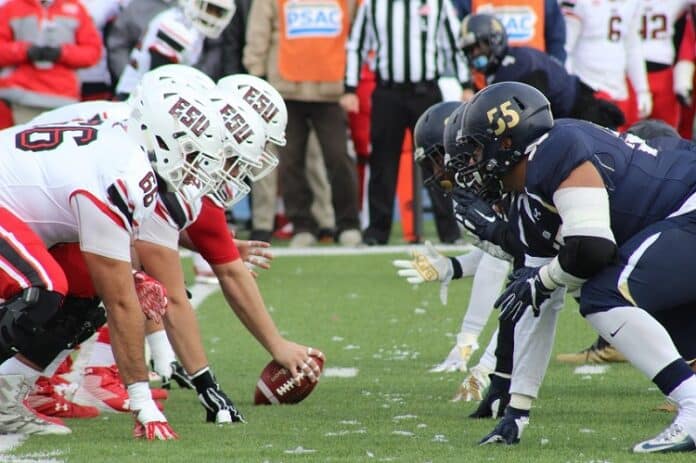As NFL seasons have become more competitive each year, teams are making the most of technology and data to identify the best players, and tactics and analyse and create a pathway to success. Whilst statistics have long been important for NFL Fantasy players, they are now equally as such for the real coaches and players.
With betting underdogs winning games more frequently, the league is becoming more balanced and there are fewer ‘easy games’ every season. Also, with the league seemingly becoming more pass-heavy each year that passes, analytics has become an important part of establishing the air game.
It is not just the teams that are using these methods though, the league itself is constantly evolving through them. Since 2002, the NFL has used data to inform 50 rule changes to reduce the risk of injury. There is perhaps no bigger example of this than the helmet designs. The statistics over the last 3 years discuss about increased adoption of top-performing helmets – scoring a 100% adoption over the last 5 seasons. Concussions have dropped by 25% when compared to the 2015-17 seasons.
When it comes to NFL teams’ use of analytics, one of the biggest metrics they use is Expected Points (EP) and Expected Points Added, also known as EPA. EP measures the expectation of an event to happen under a situation, whereas EPA focuses on the difference between the expectation and the actual points. This makes for better informed play-making decisions by players and coaches. A gain of two yards on 1-and-negative ten is a far different margin than a two-yard advantage on 3-and-1, which is not captured in traditional statistical methods. The translation of raw gains into values is instrumentalized by the Expected Points framework.
It is because of this kind of statistical analysis that we are seeing more and more teams go for it on fourth down as well as going for two-point conversions for the go-ahead rather than a game-tying PAT. John Harbaugh has been one of the biggest advocates of the use of data analytics on the sideline and even has an analyst in his ear during every game. He has however come under some criticism from purists who argue that the risk involved in putting faith in the numbers does not take into account the nuances of each individual game.
Ryan Paganetti, the lead analyst of the Philadelphia Eagles during the Super Bowl winning season, has spoken of his work under former coach Doug Pedersen.
“I think that was a good example of Doug’s receptiveness. Ultimately, it was going to be his decision … but he wanted to know the information and be able to digest the information and make the best decision for the football team,” Paganetti said.
Paganetti would gather dater based on the opponent on any given week and found trends or weaknesses that they could exploit.
“It really was on a week-to-week basis with some of the game-planning stuff. It really could be anything that comes up that could be pertinent to that particular week and that is something that I really enjoyed,” Paganetti said.
Paganetti conducted league-wide studies prior to the season and one of his main focuses was on QB sneaks. He looked at the successes of these plays and their limits and found that in short-yardage situations it was not exploited enough by teams around the NFL. So of course, he knew that the Eagles would be the face of the QB sneak in 2017.
Paganetti then presented his findings to the Eagles and included the best alignment for the team, optimal footwork and the best situations to incorporate the call of a QB sneak play. That season, Carson Wentz made 13 out of 13 QB sneaks and Paganetti says that it was this that would entice the coaching and playing staff to buy into the statistical-based play calls.
Teams are even using analytics in training and coaching now. The Seattle Seahawks rely on Amazon SageMaker, a fully managed machine learning service, to better help them with coaching a player’s specific skillset and needs. They use SageMaker to find patterns in player data before addressing them with tailored coaching. This kind of targeted advice helps players improve on the field.
In fact, after a disappointing year last season, Pete Carroll added reinforcements to his analytics team, hiring Peter Engler and Becca Erenbaum. They went from 7-10 and bottom of the NFC West last year to 9-8 and a wildcard place in 2022/23.
Analytics is certainly here to stay in the NFL. Their impact can be seen all over the field and even on the training ground and it has become an integral position on the coaching staff. There is no doubting the impact this added layer of research has added on the game and we can safely say it is better off for it.





